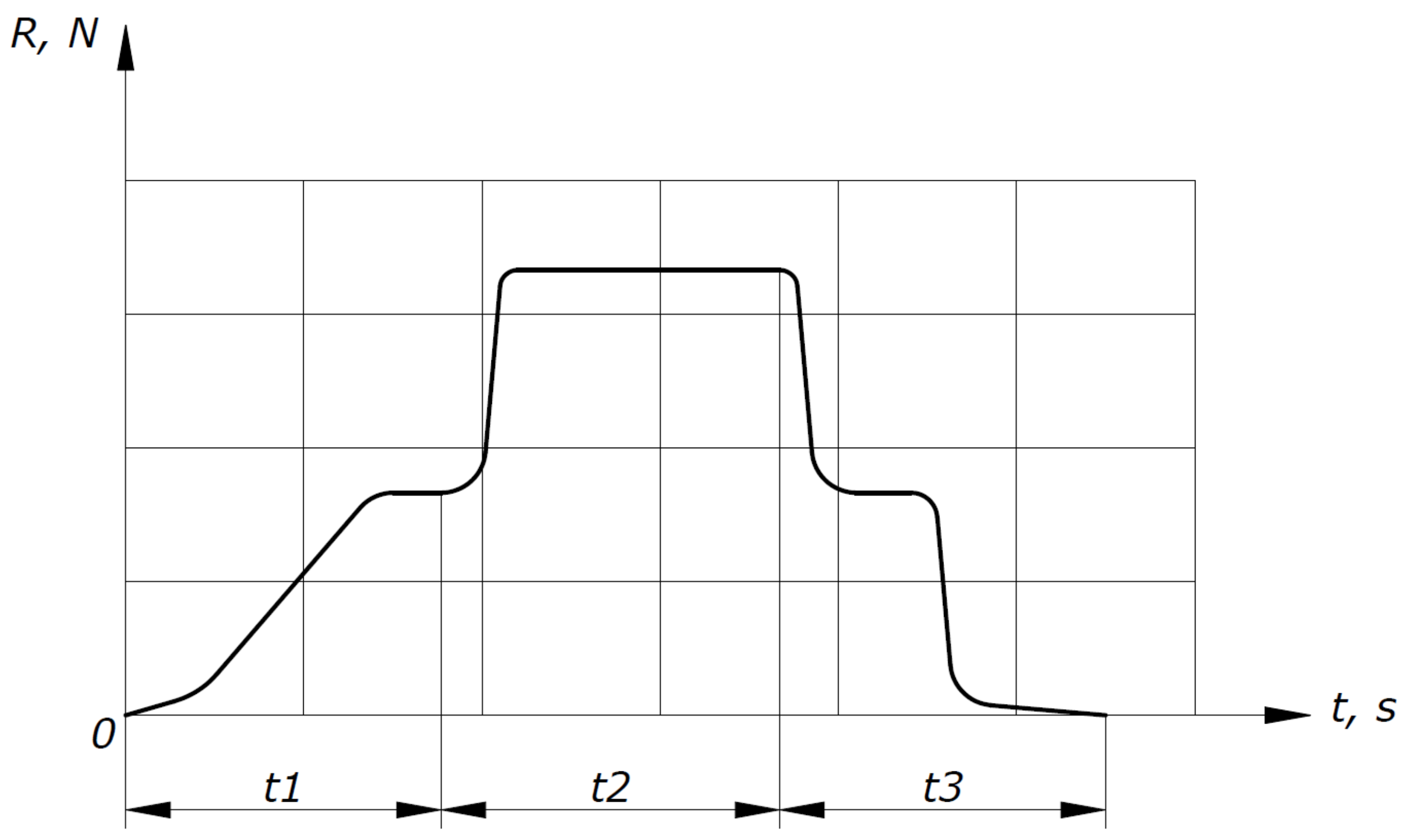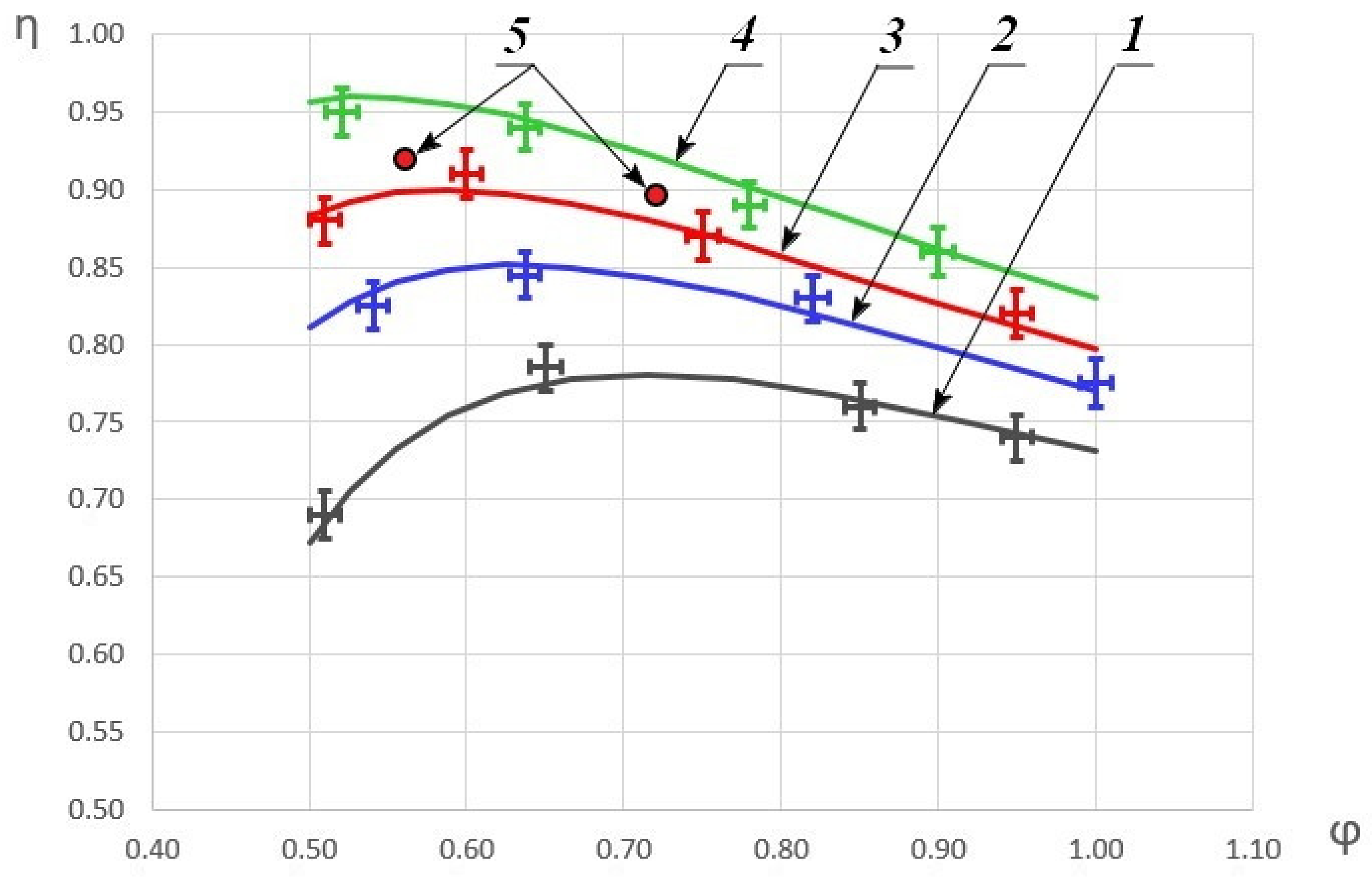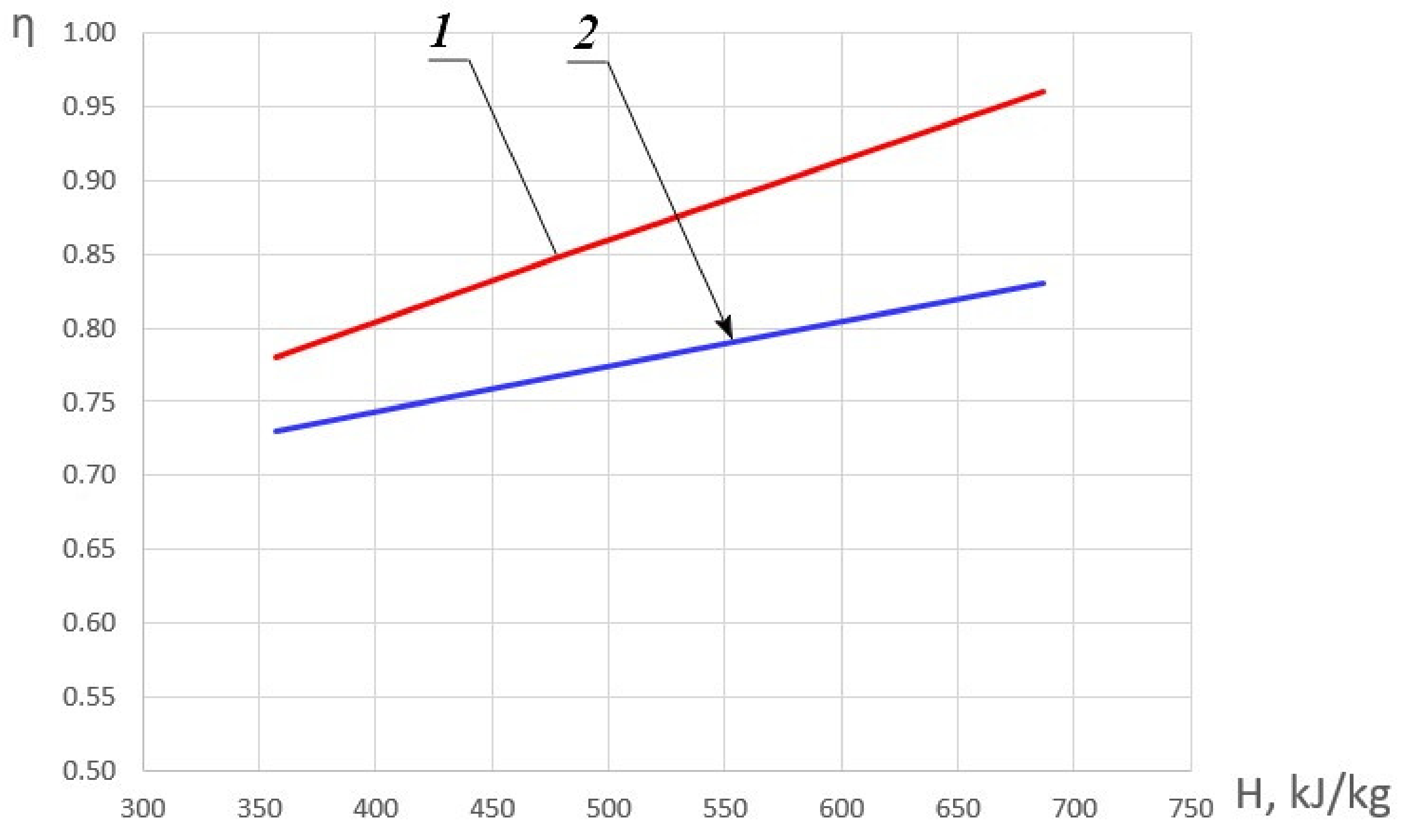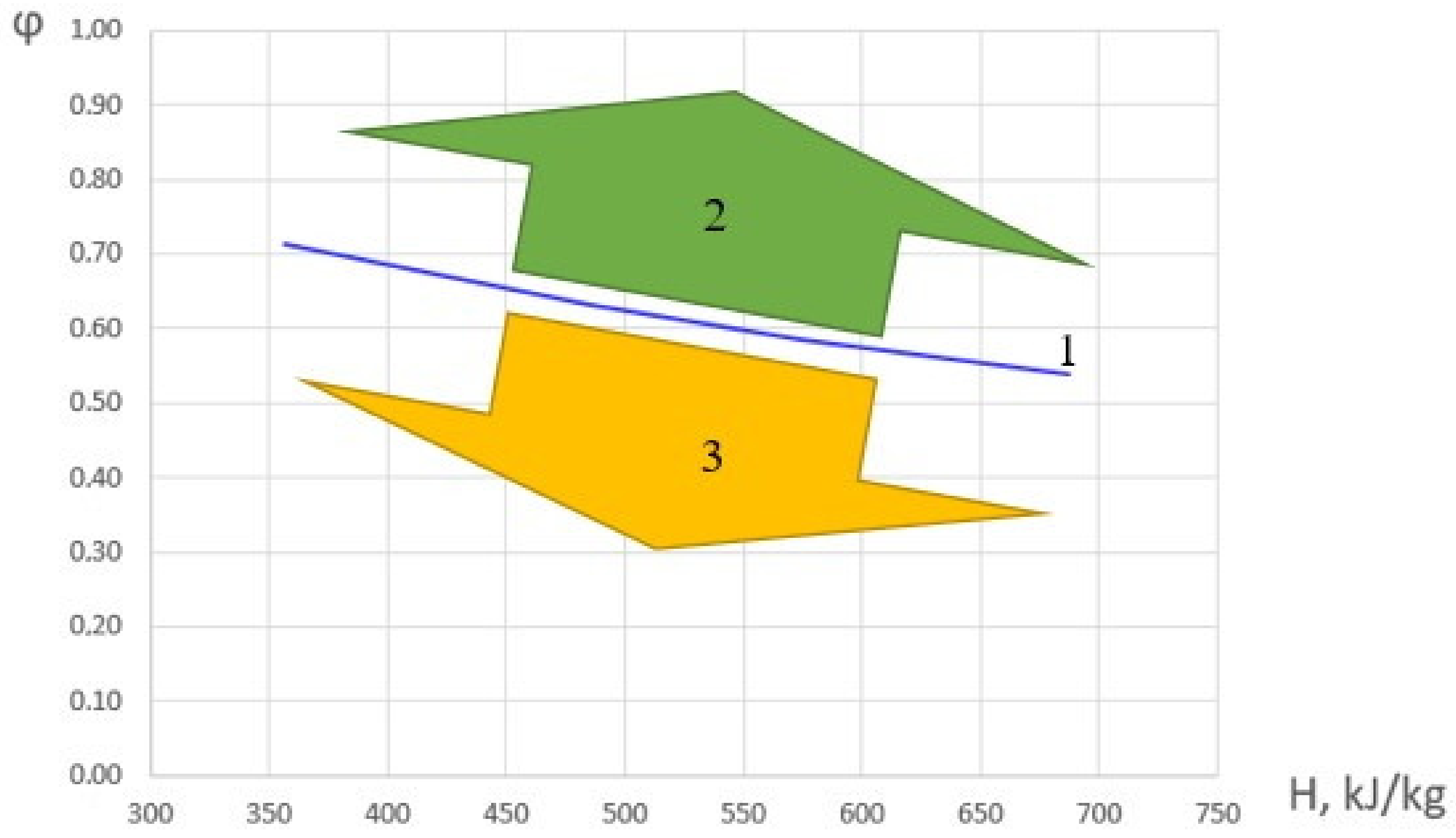Experimental Study of Methane Combustion Efficiency in a High-Enthalpy Oxygen-Containing Flow
Abstract
:1. Introduction
2. Experimental Facility and Data Processing Technique
3. Experimental Results and Their Analysis
4. Conclusions
Author Contributions
Funding
Conflicts of Interest
References
- Urzay, J. Supersonic Combustion in Air-Breathing Propulsion Systems for Hypersonic Flight. Annu. Rev. Fluid Mech. 2018, 50, 593. [Google Scholar] [CrossRef]
- Tripathi, G.; Sharma, P.; Dhar, A. Effect of methane augmentations on engine performance and emissions. Alex. Eng. J. 2020, 59, 429. [Google Scholar] [CrossRef]
- Agora Energiewende; Ember. 2021: The European Power Sector in 2020: Up-to-Date Analysis on the Electricity Transition. Available online: https://static.agora-energiewende.de/fileadmin2/Projekte/2021/2020_01_EU-Annual-Review_2020/A-EW_202_Report_European-Power-Sector-2020.pdf (accessed on 15 December 2021).
- Azatyan, V.V. Chain nature of the combustion, explosion, and detonation of gases: New aspects of theory. Russ. J. Phys. Chem. A 2015, 89, 1731. [Google Scholar]
- Kim, N.J. Effect of an inlet temperature disturbance on the propagation of methane-air premixed flames in small tubes. Combust. Flame 2009, 156, 132. [Google Scholar] [CrossRef]
- Cheng, R.K. Autoignition in methane-hydrogen mixtures. Combust. Flame 1984, 58, 125. [Google Scholar] [CrossRef]
- Vasiliev, A.A. Ignition delay in multifuel mixtures. Combust. Explos. Shock Waves 2007, 43, 42. [Google Scholar] [CrossRef]
- Austin, J.M.; Shepherd, J.E. Detonations in Hydrocarbon Fuel Blends. Combust. Flame 2003, 132, 73. [Google Scholar] [CrossRef] [Green Version]
- Vasiliev, A.A. Cell size as the main geometric parameter of multifront detonation wave. J. Propul. Power 2006, 22, 1245. [Google Scholar] [CrossRef]
- Hernandez-Rivera, R.; Troiani, G.; Pagliaroli, T.; Hernandez-Guerrero, A. Detection of the thermoacoustic combustion instabilities of a slot burner based on a diagonal-wise recurrence quantification. Phys. Fluids 2019, 31, 124105. [Google Scholar] [CrossRef]
- Schefer, R.W.; Wicksal, D.M.; Agrawal, A.K. Combustion of hydrogen-enriched methane in a lean premixed swirl-stabilized burner. Proc. Combust. Inst. 2002, 29, 843–851. [Google Scholar] [CrossRef]
- Afarin, Y.; Tabejamaat, S. Effect of hydrogen on H2/CH4 flame structure of MILD combustion using the LES method. Int. J. Hydrogen Energy 2013, 38, 3447–3458. [Google Scholar] [CrossRef]
- Hernandez-Perez, F.E.; Groth, C.P.T.; Gulder, O.L. Large-eddy simulation of lean hydrogen-methane turbulent premixed flames in the methane-dominated regime. Int. J. Hydrogen Energy 2014, 39, 7147–7157. [Google Scholar] [CrossRef] [Green Version]
- Dinkelacker, F.; Manickam, B.; Muppal, S.P.R. Modelling and simulation of lean premixed turbulent methane/hydrogen/air flames with an effective Lewis number approach. Combust. Flame 2011, 158, 1742–1749. [Google Scholar] [CrossRef]
- Zhang, M.; Wanga, J.; Xie, Y.; Jin, W.; Wei, Z.; Huang, Z.; Kobayashi, H. Flame front structure and burning velocity of turbulent premixed CH4/H2/air flames. Int. J. Hydrogen Energy 2013, 38, 11421–11428. [Google Scholar] [CrossRef]
- Sun, Z.-Y.; Li, G.-X. Turbulence influence on explosion characteristics of stoichiometric and rich hydrogen/air mixtures in a spherical closed vessel. Energy Convers. Manag. 2017, 149, 526–535. [Google Scholar] [CrossRef]
- Sun, Z.-Y. Experimental studies on the explosion indices in turbulent stoichiometric H2/CH4/air mixtures. Int. J. Hydrogen Energy 2019, 44, 469–476. [Google Scholar] [CrossRef]
- Day, M.S.; Gao, X.; Bell, J.B. Properties of lean turbulent methane-air flames with significant hydrogen addition. Proc. Combust. Inst. 2011, 33, 1601–1608. [Google Scholar] [CrossRef]
- Therkelsen, P.L.; Enrique Portillo, J.; Littlejohn, D.; Martin, S.M.; Cheng, R.K. Self-induced unstable behaviors of CH4 and H2/CH4 flames in a model combustor with a low-swirl injector. Combust. Flame 2013, 160, 307–321. [Google Scholar] [CrossRef]
- Li, D.; Wang, R.; Yang, G.; Wan, J. Effect of hydrogen addition on the structure and stabilization of a micro-jet methane dif-fusion flame. Int. J. Hydrogen Energy 2021, 46, 5790–5798. [Google Scholar] [CrossRef]
- Liu, W.; Kelley, A.; Law, C. Flame propagation and counterflow nonpremixed ignition of mixtures of methane and ethylene. Combust. Flame 2010, 157, 1027–1036. [Google Scholar] [CrossRef]
- Wang, T.; Luo, Z.; Wen, H.; Cheng, F.; Liu, L.; Su, Y.; Liu, C.; Zhao, J.; Deng, J.; Yu, M. The explosion enhancement of methane-air mixtures by ethylene in a confined chamber. Energy 2021, 214, 119042. [Google Scholar] [CrossRef]
- Shao, J.; Davidson, D.F.; Hanson, R.K. A shock tube study of ignition delay times in diluted methane, ethylene, propene and their blends at elevated pressures. Fuel 2018, 225, 370–380. [Google Scholar] [CrossRef]
- Wilson, M.P.; Bowersox, R.D.W.; Glawe, D.D. Experimental Investigation of the Role of Downstream Ramps on a Supersonic Injection Plume. J. Propul. Power 1999, 15, 432. [Google Scholar] [CrossRef]
- Sislian, J.P.; Schumacher, J. Fuel/air mixing enhancement by cantilevered ramp injectors in hypersonic flows. In International Symposium on Air Breathing Engines (1999); American Institute of Aeronautics and Astronautics: Reston, VA, USA, 1999. [Google Scholar]
- Wan, J.; Zhao, H.; Akkerman, V. Anchoring mechanisms of a holder-stabilized premixed flame in a preheated mesoscale combustor. Phys. Fluids 2020, 32, 097103. [Google Scholar] [CrossRef]
- Chaudhuri, S.; Cetegen, B.M. Blowoff characteristics of bluff-body stabilized conical premixed flames with upstream spatial mixture gradients and velocity oscillations. Combust. Flame 2008, 153, 616. [Google Scholar] [CrossRef]
- Nair, S.; Lieuwen, T. Near-Blowoff Dynamics of a Bluff-Body Stabilized Flame. J. Propul. Power 2007, 23, 421. [Google Scholar] [CrossRef]
- Arefyev, K.Y.; Krikunova, A.I.; Panov, V.A. Experimental study of premixed methane-air flame coupled with an external acoustic field. J. Phys. Conf. Ser. 2019, 1147, 1. [Google Scholar] [CrossRef] [Green Version]
- Candel, S. Combustion dynamics and control: Progress and challenges. Proc. Combust. Inst. 2002, 29, 1–28. [Google Scholar] [CrossRef]
- Zong, R.; Kang, R.; Liu, C.; Zhang, Z.; Zhi, Y. Analysis of Flame Extinguishment and Height in Low Frequency Acoustically Excited Methane Jet Diffusion Flame. Microgravity Sci. Technol. 2018, 30, 237. [Google Scholar] [CrossRef]
- Bourehla, A.; Baillot, F. Appearance and stability of a laminar conical premixed flame subjected to an acoustic perturbation. Combust. Flame 1998, 114, 303. [Google Scholar] [CrossRef]
- Baillot, F.; Demare, D. Responses of a lifted non-premixed flame to acoustic forcing. Part 2. Combust. Sci. Technol. 2010, 179, 905–932. [Google Scholar] [CrossRef]
- Birbaud, A.L.; Durox, D.; Candel, S. Upstream flow dynamics of a laminar premixed conical flame submitted to acoustic modulations. Combust. Flame 2006, 146, 541–552. [Google Scholar] [CrossRef]
- Matsubara, Y.; Takita, K.; Masuya, G. Combustion enhancement in a supersonic flow by simultaneous operation of DBD and plasma jet. Proc. Combust. Inst. 2013, 34, 3287–3294. [Google Scholar] [CrossRef]
- Do, H.; Cappelli, M.A.; Mungal, M.G. Plasma assisted cavity flame ignition in supersonic flows. Combust. Flame 2010, 157, 1783–1794. [Google Scholar] [CrossRef]
- Leonov, S.B.; Kochetov, I.V.; Napartovich, A.P.; Sabel’Nikov, V.A.; Yarantsev, D.A. Plasma-Induced Ethylene Ignition and Flameholding in Confined Supersonic Air Flow at Low Temperatures. IEEE Trans. Plasma Sci. 2010, 39, 781–787. [Google Scholar] [CrossRef]
- Leonov, S.B.; Yarantsev, D.A.; Napartovich, A.P.; Kochetov, I.V.; Ignition, I.; Researcher, L. Plasma-Assisted Ignition and Flameholding In High-Speed Flow. In Proceedings of the 44th AIAA Aerospace Sciences Meeting Including the New Horizons Forum and Aerospace Exposition, Reno, NV, USA, 9–12 January 2006. [Google Scholar]
- Leonov, S.B.; Yarantsev, D.; Carter, C. Experiments on Electrically Controlled Flameholding on a Plane Wall in a Supersonic Airflow. J. Propuls. Power 2009, 25, 289–294. [Google Scholar] [CrossRef]
- Sosounov, V. Research and development of ramjets/ramrockets. Part III. The study of gaseous hydrogen ram combustors. AGARD Lect. Ser. 1993, 194, 1–6. [Google Scholar]
- Zhu, Q.; Zhao, X.; Deng, Y. Advances in the partial oxidation of methane to synthesis gas. J. Nat. Gas Chem. 2004, 13, 191–203. [Google Scholar]
- Mikofski, M.A.; Williams, T.C.; Shaddix, C.R.; Blevins, L.G. Flame Height Measurement of Laminar Inverse Diffusion Flames. Combust. Flame 2006, 146, 63. [Google Scholar] [CrossRef] [Green Version]
- Tsuji, H.; Gupta, A.K.; Hasegawa, T.; Katsuki, K.; Katsuki, M.; Morita, M. High Temperature Air Combustion: From Energy Conservation to Pollution Reduction; CRC Press: Boca Raton, FL, USA, 2003. [Google Scholar]
- Weber, R.; Orsino, S.; Verlaan, A.; Lallemant, N. Combustion of natural gas with high temperature air and large quantities of flue gas. Proc. Combust. Inst. 2000, 28, 1315. [Google Scholar] [CrossRef]
- Vinogradov, V.A.; Shikhman, Y.M.; Albegov, R.V.; Vedeshkin, G.K. Experimental Research of Methane Combustion in High Speed Subsonic Airflow. AIAA Paper 2002–5208—2002. In Proceedings of the 11th AIAA/AAAF International Conference Space Planes and Hypersonic Systems and Technologies, Orleans, France, 29 September–4 October 2002. [Google Scholar]
- Vinogradov, V.A.; Shikhman, Y.M.; Albegov, R.V.; Vedeshkin, G.K. About possibility of effective methane combustion in high speed subsonic airflow. AIAA Paper 2002–5206—2002. In Proceedings of the 11th AIAA/AAAF International Conference Space Planes and Hypersonic Systems and Technologies, Orleans, France, 29 September–4 October 2002. [Google Scholar]
- Xiao, W.; Huang, Y. Lean blowout limits of a gas turbine combustor operated with aviation fuel and methane. Heat Mass Transf. 2015, 52, 1015–1024. [Google Scholar] [CrossRef] [Green Version]
- Albegov, R.V.; Vinogradov, V.A.; Shikhman, Y.M. Combustion of methane injected into an air flow with high subsonic velocities by different methods. Combust. Explos. Shock Waves 2016, 52, 14–25. [Google Scholar] [CrossRef]
- Batraev, I.S.; Prokhorov, E.S.; Ul’Yanitskii, V.Y. Acceleration of Dispersed Particles by Gas Detonation Productions in an Expanding Channel. Combust. Explos. Shock Waves 2021, 57, 588–596. [Google Scholar] [CrossRef]
- Zipf, R.K.J.; Gamezo, V.N.; Sapko, M.J.; Marchewka, W.P.; Mohamed, K.M.; Oran, E.S.; Kessler, D.A.; Weiss, E.S.; Addis, J.D.; Karnack, F.A.; et al. Methane-Air Detonation Experiments at NIOSH Lake Lynn laboratory. J. Loss Prev. Process. Ind. 2013, 26, 281–396. [Google Scholar] [CrossRef]
- Aleksandrov, V.Y.; Arefyev, K.Y.; Baskakov, A.A.; Ilchenko, M.A. Detonation of air-methane mixture in a supersonic crossflow. BMSTU J. Mech. Eng. 2017, 2, 98–108. [Google Scholar] [CrossRef] [Green Version]
- Arefyev, K.Y.; Aleksandrov, V.Y.; Rudinski, A.V. The investigation of the plasma effect on the gaseous methane combustion efficiency in a supersonic flow. High Temp. 2021, 59, 548–556. [Google Scholar]
- Guiberti, T.F.; Durox, D.; Scouflaire, P.; Schuller, T. Impact of heat loss and hydrogen enrichment on the shape of confined swirling flames. Proc. Combust. Inst. 2015, 35, 1385–1392. [Google Scholar] [CrossRef]
- Aref’ev, K.Y.; Kukshinov, N.V.; Serpinskii, O.S. Methodology of experimental determining the combustion efficiency of fuel mixture flows in channels of variable cross-section. Fluid Dyn. 2017, 52, 682–694. [Google Scholar] [CrossRef]
- Annushkin, Y.M. Basic laws of burn-out in turbulent hydrogen jets in air channels. Fiz. Goreniya Vzryva 1981, 4, 59. [Google Scholar]
- Aleksandrov, V.Y.; Kukshinov, N.V. Modified combustion efficiency curve for high-velocity model combustors inte-grated with the inlet. Combust. Explos. Shock Waves 2016, 52, 281–285. [Google Scholar]
- Aver’kov, I.S.; Aleksandrov, V.Y.; Aref’ev, K.Y.; Voronetskii, A.V.; Gus’kov, O.V.; Prokhorov, A.N.; Yanovskii, L.S. The influence of combustion efficiency on the characteristics of ramjets. High Temp. 2016, 54, 882–891. [Google Scholar] [CrossRef]
- Aref’Ev, K.Y.; Voronetskii, A.V.; Il’Chenko, M.A. Dynamic characteristics of a resonant gas-dynamic system for ignition of a fuel mixture. Combust. Explos. Shock Waves 2013, 49, 657–661. [Google Scholar] [CrossRef]
- Aref’Ev, K.Y.; Voronetskii, A.V.; Il’Chenko, M.A.; Suchkov, S.A. Numerical and experimental study of ignition of a two-phase fuel composition (ethanol + air) in a resonance gas-dynamic system. Combust. Explos. Shock Waves 2017, 53, 398–405. [Google Scholar] [CrossRef]
- Aleksandrov, V.Y.; Aref’Ev, K.Y.; Il’Chenko, M.A. Numerical and experimental study of oscillatory processes in small-size combustion heaters of air. Combust. Explos. Shock Waves 2016, 52, 439–445. [Google Scholar] [CrossRef]







Publisher’s Note: MDPI stays neutral with regard to jurisdictional claims in published maps and institutional affiliations. |
© 2022 by the authors. Licensee MDPI, Basel, Switzerland. This article is an open access article distributed under the terms and conditions of the Creative Commons Attribution (CC BY) license (https://creativecommons.org/licenses/by/4.0/).
Share and Cite
Grishin, I.; Zakharov, V.; Aref’ev, K. Experimental Study of Methane Combustion Efficiency in a High-Enthalpy Oxygen-Containing Flow. Appl. Sci. 2022, 12, 899. https://doi.org/10.3390/app12020899
Grishin I, Zakharov V, Aref’ev K. Experimental Study of Methane Combustion Efficiency in a High-Enthalpy Oxygen-Containing Flow. Applied Sciences. 2022; 12(2):899. https://doi.org/10.3390/app12020899
Chicago/Turabian StyleGrishin, Ilya, Vyacheslav Zakharov, and Konstantin Aref’ev. 2022. "Experimental Study of Methane Combustion Efficiency in a High-Enthalpy Oxygen-Containing Flow" Applied Sciences 12, no. 2: 899. https://doi.org/10.3390/app12020899




